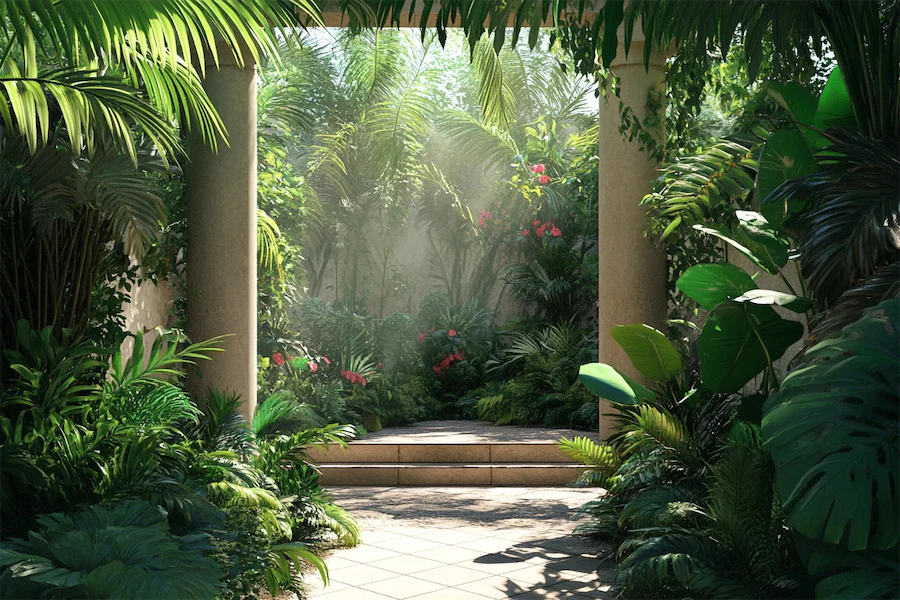An Art Deco Garden is a landscape design that reflects the opulence and geometric elegance of the Art Deco movement, which flourished in the 1920s and 1930s. Characterized by bold lines, symmetrical patterns, and the use of modern materials, these gardens create a sophisticated outdoor space that complements Art Deco architecture.
History and Origins of Art Deco Gardens
The Art Deco movement emerged in the early 20th century, influencing various forms of art, architecture, and design. In garden design, Art Deco introduced a departure from traditional, ornate styles, embracing modernity through streamlined forms and the incorporation of industrial materials. This design philosophy extended to landscaping, where gardens were crafted to mirror the geometric motifs and luxurious feel of Art Deco interiors.
Key Features of Art Deco Gardens
- Geometric Patterns: Art Deco gardens often feature strong geometric shapes, such as zigzags, chevrons, and stepped forms, both in the layout and in decorative elements. Pathways, flower beds, and hedges are arranged to create symmetrical and harmonious designs.
- Modern Materials: The use of materials like concrete, steel, and glass reflects the industrial advancements of the era. These materials are employed in structures like pergolas, water features, and garden furniture, contributing to a sleek and polished aesthetic.
- Bold Plantings: Plant selections often include species with strong architectural forms, such as yuccas, agaves, and boxwoods. These plants complement the garden’s structured design and add to the overall dramatic effect.
- Decorative Elements: Incorporating sculptures, fountains, and ornamental lighting with Art Deco motifs enhances the garden’s thematic coherence. These elements often feature stylized designs and metallic finishes, adding a touch of glamour.
Applications of Art Deco Gardens
- Residential Settings: Homeowners can design their gardens to reflect Art Deco principles, creating cohesive outdoor spaces that resonate with the architectural style of their homes. This approach adds value and aesthetic appeal to the property.
- Public Spaces: Parks and communal areas can incorporate Art Deco elements to evoke a sense of historical elegance and provide visually engaging environments for visitors. Such designs can also serve as cultural landmarks, preserving the legacy of the Art Deco era.
Considerations When Creating an Art Deco Garden
- Symmetry and Proportion: Maintaining balance in the design is crucial. Careful planning ensures that all elements are proportionate and contribute to the overall harmony of the space. This includes aligning pathways, plantings, and structures to create a unified look.
- Material Selection: Choosing durable and authentic materials that weather well over time is essential for longevity. It’s important to select materials that not only reflect the Art Deco aesthetic but also withstand local climate conditions.
- Maintenance: The structured nature of Art Deco gardens requires regular upkeep to preserve their defined lines and clean appearance. This includes pruning, cleaning hardscape elements, and ensuring that decorative features remain in good condition.
Conclusion
An Art Deco Garden offers a timeless and elegant outdoor space that captures the essence of a significant design movement. By integrating geometric patterns, modern materials, and bold plantings, such a garden not only enhances the beauty of a property but also serves as a tribute to the enduring appeal of Art Deco design.
